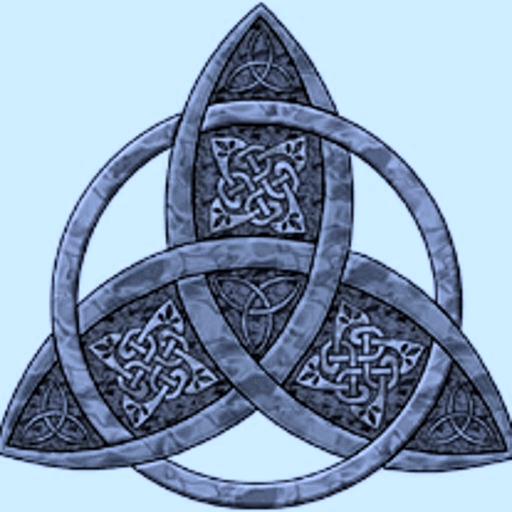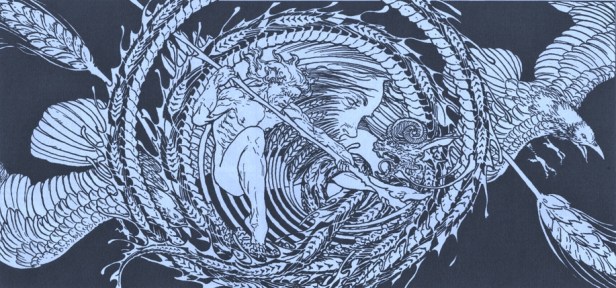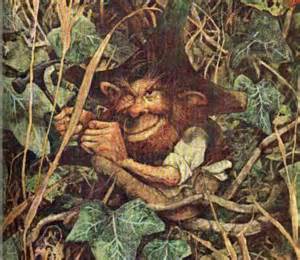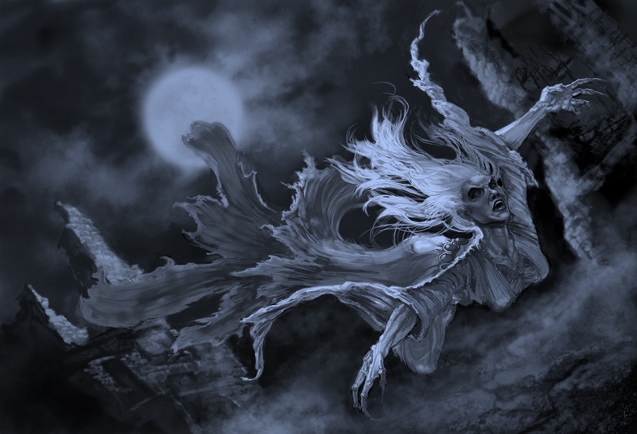
For generations, children of Ireland have been reared on mythology and folklore. Of course to us they are far more than the tales of ancient legends, they are where we are from and define who we are now. From Cú Chulainn to Fionn mac Cumhaill and the Salmon of Knowledge to the triple goddess The Morrigan, giants, demi gods and creatures from the ethereal realm have always been a part of our lives.
Most of Ireland’s regional and national festivals evolved from the gods and goddesses of ancient times, especially from the Tuatha Dé Danann, deities deemed as the forefathers of Irish culture and civilization. Of course the Formorians, a wild and altogether darker and more sinister supernatural race, still have their part to play.
The goddess Brigid is immortalized in the spring feast of Imbolc and Saint Brigid’s Day, while Lughnasa is the harvest festival in the name of the god Lugh. Lugh was actually the son of a king of the Tuatha Dé Danann and his mother a Formorian. His games known as the Tailteann were a test of strength and agility among his people. Today these games have become known as the Gaelic Games, played in every village, town and county throughout Ireland.

Fear is at the source of the majority of folklore tales and practices, particularly in relation to death and the protection of the soul as well as safeguarding against the ethereal creatures of darkness. The festival of Samhain is a prime example, taking place at the end of October intertwining the light and dark, shielding against bad spirits and misfortune, but also welcoming back the dead with open arms.
The fear for celebrants was that malevolent spirits and evil entities could also cross with their loved ones as could the Devil himself. As well as the dead, homeowners had to contend with the fairies travelling abroad to create mischief. Gifts in the form of food or milk would be left on doorsteps to guarantee a fairy blessing and anyone foolish enough to not do so would be subject to pranks by the cheeky wee folk at best and victim to a fairy curse at worst.
Without a doubt the most terrifying of these supernatural beings are the harbingers of death. Crom Dubh was the sacrificial god associated with death and slaughter and his incarnation was The Dullahan, a part of the ‘Unseelie court’ of the fairy realm. The Unseelie fairies are those deemed the most evil and malicious of all the otherworld entities. Also known as Gan Ceann, meaning without a head, The Dullahan hunts the souls of the dying in the night.

Banshees have forever been known as portents of death and the goddess Clíodhna was the very first of these wailing spirits seeking death for revenge and torment as well as calling on those due to die. Individual families often having their own personal Banshee heralding a death to this very day.
From these gods and goddesses an entire culture and belief system has grown, with Ireland being home to a myriad of ethereal creatures and spirits, from both the ‘good’ Seelie Court and ‘sinister’ Unseelie Court.
Once again fear is the driving force behind the behaviour and response to these creatures and their accompanying threat, with fortification rites being fundamental. Druidic runes for example focus on strength, energy, health and protection. The markings on runes tend to come from Ogham, an ancient language of Ireland uncovered by archaeological finds over the centuries by way of Ogham Stones. These Stones have been found all over Ireland, usually associated with burial stones of ancient kings and warriors, however they are not of the past – Druidic practices are not just ongoing in modern Ireland but growing in popularity.
In previous centuries much of the population of Ireland couldn’t read or write and hexes, protection spells and rituals involved symbolism to get the point across. A Piseóg is a curse, placed on feuding neighbors, competing farmers and so on. Often recognized by a circle of eggs found in the hay or a talisman placed on a wall, they are set to bring misfortune on the home.

The power of the Piseóg lies in fear, a farmer would be so terrified of the curse he would destroy his own crops and cattle. But these curses can’t still be happening today can they? Tell that to the terrified man in Kerry I spoke to recently, who found a circle of eggs on his boundary wall and hasn’t slept properly since, his mind trying to figure out who would curse him and why.
What of the cute and friendly leprechaun? Don’t kid yourself! There are several types of leprechaun and not all of them guard a crock of gold! Around for over 1000 years, the leprechaun is descended from the Tuatha Dé Danann and are a part of the Sidhe or Fairy family. The name Leprechaun has two sources, both from old Irish. The first is ‘Leath Bhrogan’, meaning shoe maker and the second is Luacharmán meaning small body.
Leprechauns like to keep themselves to themselves and really don’t like mortals – or each other. Very much loners they are happiest in their own intoxicated company, however there is one you should be afraid of and that is the Fear Dearg which translates as ’Red Man’. Recognized by his blemished yellowy skin, Fear Dearg is dressed head to foot in red and his greatest delight is your fear and dread. He has the ability to make your nightmare a reality.

Of course this is all just the tip of the iceberg. We have Fairy Shock Troops riding the wind, devastating farmlands and cattle just for kicks, spirits of the eternally damned wandering the earthly realm looking for Irish souls to steal, serpents, mermaids and hellhounds. We have the Púca, a shapeshifting creature who terrorizes the night and ghosts, demons and the Devil himself.
If you thought Saint Patrick had driven all the paganism and darkness from Ireland, you would be wrong. Far from Christianity banishing these beliefs and rituals, the early monks actually documented these mythological events into such manuscripts as the Book of Leinster and the Annals of the Four Provinces. Instead of turning the Irish away from their gods and goddesses, the clergy fashioned their stories into those of Saints such as Saint Brigid. This is why Christian and Pagan stories are intertwined in much the same way Irish History and Mythology can never be separated and why we are great storytellers, it’s in our blood, heritage and very essence of being.
Ireland is a land rich in mythology and folklore, mixed with dark history and truth, bound neatly in fear, magic and excitement. Welcome to the Emerald Isle!

